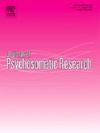童年家庭的产前社会经济状况与成年早期和中期疼痛扩散风险(ROPS)--1966 年芬兰北部出生队列的描述性研究。
IF 3.5
2区 医学
Q2 PSYCHIATRY
引用次数: 0
摘要
目的:疼痛扩散风险(ROPS)是一个六项工具,用于捕获慢性疼痛及其扩散的关键数据驱动预后因素。ROPS值越高,表明风险越高。可能与ROPS相关的早期因素尚不清楚。我们旨在研究31岁和46岁儿童家庭的产前社会经济地位(产前SES)与ROPS之间的关系。方法:该研究基于1966年芬兰北部出生队列和先前制定的产前家庭SES潜在集群:最高地位(参考),小,大,平均财富和农村家庭。ROPS的范围从0分(参考)到2分或更多,满分为6分。采用多项回归模型识别与ROPS相关的产前SES集群。结果:在31岁时(n = 8252),与地位最高的家庭集群相比,只有较大的家庭集群与ROPS上的累积点数(2个或更多)相关(优势比[or]: 1.46, 95%置信区间[CI]: 1.14-1.87)。相应的发现在46岁时被观察到(n = 6245),但小家庭和平均财富家庭集群也与这一结果有关。然而,大家族集群的相关性最强(OR 1.48, 95% CI 1.16-1.89)。结论:出生在拥有≥5个成员的家庭中的后代可能在整个生命过程中积累更多的关键数据驱动的预后因素,从而导致更严重的疼痛,直到中年。未来,产前SES和疼痛之间的联系将是重要的,以检查在光的ROPS。本文章由计算机程序翻译,如有差异,请以英文原文为准。
Antenatal socioeconomic status of childhood family and the risk of pain spreading (ROPS) in early and mid-adulthood - a descriptive study from the northern Finland birth cohort 1966
Objective
The Risk of Pain Spreading (ROPS) is a six-item tool capturing key data-driven prognostic factors for chronic pain and its spreading. Higher values on the ROPS indicate a higher risk. Early factors potentially associated with the ROPS are unknown. We aimed to examine the associations between antenatal socioeconomic status of childhood family (antenatal SES) and ROPS at ages 31 and 46 years.
Methods
The study was based on the Northern Finland Birth Cohort 1966 and previously formulated latent clusters of antenatal family SES: Highest status (the reference), Small, Larger, Average wealth, and Rural families. The ROPS ranged from zero (the reference) to two or more points out of six. A multinomial regression model was used to identify antenatal SES clusters associated with ROPS.
Results
At 31 years (n = 8252), only the Larger families cluster was associated with having accumulated points (two or more) (Odds ratio [OR]: 1.46, 95 % Confidence Interval [CI]: 1.14–1.87) on the ROPS compared to the Highest status families cluster. Corresponding finding was observed at 46 years (n = 6245), but the Small families and Average wealth families clusters were also associated with this outcome. The association of Larger families cluster was, however, the strongest (OR 1.48, 95 % CI 1.16–1.89).
Conclusions
Offspring born into families with ≥5 members are likely to accumulate higher sums of key data-driven prognostic factors for worse pain across the life course until middle age. In future, associations between antenatal SES and pain would be important to be examined in a light of the ROPS.
求助全文
通过发布文献求助,成功后即可免费获取论文全文。
去求助
来源期刊
CiteScore
7.40
自引率
6.40%
发文量
314
审稿时长
6.2 weeks
期刊介绍:
The Journal of Psychosomatic Research is a multidisciplinary research journal covering all aspects of the relationships between psychology and medicine. The scope is broad and ranges from basic human biological and psychological research to evaluations of treatment and services. Papers will normally be concerned with illness or patients rather than studies of healthy populations. Studies concerning special populations, such as the elderly and children and adolescents, are welcome. In addition to peer-reviewed original papers, the journal publishes editorials, reviews, and other papers related to the journal''s aims.

 求助内容:
求助内容: 应助结果提醒方式:
应助结果提醒方式:


